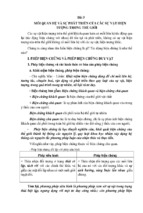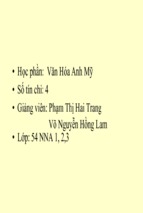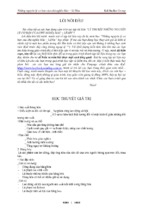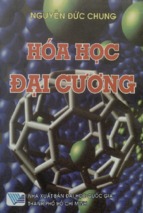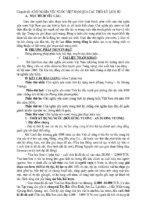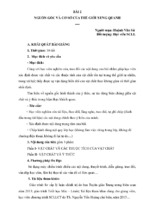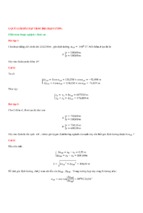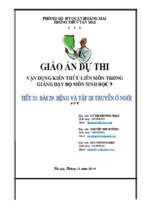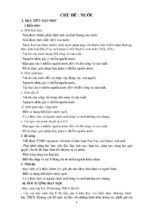Top 3 Differentials in
Neuroradiology
A Case Review
William T. O'Brien Sr.
lrhieme
lrhieme
Top 3 Differentials in Neuroradiology
A Case Review
William T. O'Brien Sr., DO
Program Director, Diagnostic Radiology Residency
David Grant USAF Medical Center
Travis Air Force Base, California
Former Chairman, Department of Radiology
Wilford Hall USAF Ambulatory Surgical Center
Joint Base San Antonio-Lackland, Texas
Associate Clinical Professor
Department of Radiology
University of california, Davis School of Medicine
Sacramento, California
Thieme
New York •Stuttgart • Delhi• Rio de Janeiro
Executive Editor: William Lamsback
Important note: Medicine is an ever-changing science under
Managing Editor: J. Owen Zurhellen IV
going continuai development. Research and clinical experience
Assistant Managing Editor: Heather Allen
are continually expanding our knowledge, in particular our
International Production Director: Andreas Schabert
knowledge of proper treatment and drug therapy. Insofar as
Senior Vice President, Editorial and E-Product
this book mentions any dosage or application, readers may rest
assured that the authors, editors, and publishers have made every
Development: Cornelia Schulze
International Marketing Director: Fiona Henderson
effort to ensure that such references are in accordance with the
International Sales Director: Louisa Turrell
state of knowledge at the time of production of the book.
Nevertheless, this does not involve, imply, or express any
Director of Sales, North America: Mike Roseman
guarantee or responsibility on the part of the publishers in respect
Senior Vice President and Chief Operating
to any dosage instructions and forms of applications stated in the
Officer: Sarah Vanderbilt
President: Brian D. Scanlan
book. Every user is requested to examine carefully the manu
Printer: Replika
facturers' leaflets accompanying each drug and to check, if nec
essary in consultation with a physician or specialist, whether the
Library of Congress Cataloging-in-Publication Data
dosage schedules mentioned therein or the contraindications
stated by the manufacturers differ from the statements made
O'Brien, William T.. author.
in the present book. Such examination is particularly important
Top 3 differentials in neuroradiology : a case review /
with drugs that are either rarely used or have been newly released
William T. O'Brien.
on the market. Every dosage schedule or every form of application
p.; cm.
Top three differentials in neuroradiology
used is entirely at the user's own risk and responsibility. The
Includes bibliographical references.
authors and publishers request every user to report to the pub
ISBN 978-1-60406-723-1 (pbk. : alk. paper) -
Iishers any discrepancies or inaccuracies noticed. If errors in this
ISBN 978-1-60406-724-8 (e-book)
work are found after publication, errata will be posted at www.
1. Title. II. Title: Top three differentials in neuroradiology.
[DNLM: 1.
thieme.com on the product description page.
Neuro-
Sorne of the product names, patents, and registered
radiography-Case Reports. 3. Central Nervous System-radiogra
designs referred to in this book are in fact registered trade
phy-Case
Diagnosis, Differential-Case Reports. 2.
Reports.
4.
Central
Nervous
System
Diseases
radiography-Case Reports. WL 141.5.N47]
marks or proprietary names even though specific reference
to this fact is not always made in the text. Therefore, the
RC71.5
appearance of a name without designation as proprietary is
616.07'5-dc23
2014026028
© 2015 Thieme Medical Publishers, Inc.
not to be construed as a representation by the publisher that
it is in the public domain.
Thieme Publishers New York
333 Seventh Avenue, New York, NY 10001 USA, 1-800-782-3488
[email protected]
Thieme Publishers Stuttgart
Rüdigerstrasse 14, 70469 Stuttgart, Germany,
+49 (0]711 8931 421
[email protected]
Thieme Publishers Delhi
A-12, Second Floor, Sector-2, NOIDA-201301, Uttar Pradesh, India,
+91 120 45 566 OO
jJ,
FSC
www.fsc.org
MIX
Paperfrom
responsible sources
FSC"' C021256
[email protected]
Thieme Publishers Rio, Thieme Publicaçêies Ltda.
This book, including ail parts thereof, is legally protected by
Argentina Building 16th floor, Ala A, 228 Praia do Botafogo Rio de
copyright. Any use, exploitation, or commercialization outside
Janeiro 22250-040 Brazil, +55 21 3736-3631
the narrow limits set by copyright legislation, without the pub
Printed in India
particular to photostat reproduction, copying, mimeographing,
5 4 3 2 1
ISBN 978-1-60406-723-1
lisher's consent, is illegal and Iiable to prosecution. This applies in
preparation of microfilms, and electronic data processing and
storage.
The views expressed in this material are those of the author,
and do not reflect the official policy or position of the United
Also available as an e-book:
States Govemment, the Department of Defense, or the Depart
eISBN 978-1-60406-724-8
ment of the Air Force.
Dedicated in memory of
Robert L Meals, DO
12 March 1928-9 June 2005
© Susan Schary 2005
For decades, Dr. Meals inspired thousands of students while serving as Academic Chairman of the
Department of Radiology, Philadelphia College of Osteopathic Medicine, Philadelphia, Pennsylvania.
Dr. Meals was more than an instructor; he was a mentor and a true friend.
To those who chose to pursue a career in radiology, he will always be a legend.
He is sorely missed but will never be forgotten.
Contents
Foreworcl by Richard E. Latchaw
Preface
Aclmowledgments
vii
viii
ix
Section 1. Brain
Subsection la. Congenital and Developmental
Subsection lb. Attenuation and Signal Abnormality
2
44
Subsection le. Masses and Masslike Lesions
110
Subsection Id. Vasculature and Cerebrospinal Fluid Spaces
186
Section IL Head and Neck
vi
Subsection Ha. calvarium and Skull Base
260
Subsection IIb. Temporal Bone
296
Subsection IIe. Sinonasal
330
Subsection IId. Maxillofacial
362
Subsection IIe. Neck (induding spaces)
382
Subsection Hf. Orbits
444
Section ID. Spine
484
Index of Differential Diagnoses, by Case
607
Index of Key Findi�
612
Foreword
Unique/
derive from multiple diagnostic categories. For some appear
ances, he even indudes some uncommon but potentially
lbat is the best word to describe Top 3 DijJerentials in
important considerations ("Additional Diagnostic Considera
Neuroradiology by William T. O'Brien-unique in its approach
tions"), thus providing more than just three possibilities for
to the clinical practiœ of neuro-imaging, and unique in its
cases with more nonspecific findings. He finishes each case
approach to education in this rapidly expanding subspecialty.
with dinical and imaging "Pearls," which provide quick dif
The traditional clinical practiœ of a neurologist, neuro
ferentiating features. He also provides some selected refer -
surgeon, orthopedic surgeon-any physician ordering a
ences for more in-depth reading on the topic.
neuro-imaging examination-is to evaluate the patient's his
Sorne imaging appearances within each section are unique,
tory in conjunction with signs and symptoms, corne ta a
without differential diagnoses and not having a Top 3; they
probable conclusion, and then request an imaging study to
are called "Aunt Minnies." Dr. O'Brien considers a number of
confirm or deny that clinical conclusion.
The clinical practice of a radiologist initially requires the
these to be fundamental to the knowledge base of the student,
sa they are presented at the end of each section. Each has an
recognition of a combination of findings on an imaging study
extensive discussion regarding pathophysiology and charac
within the stated clinical context This is followed by the
teristic imaging appearances, along with selected referenœs,
iterative comparison of these findings to examples from
similar to that found with the cases having Top 3 differential
diagnostic categories, including masses, demyelinating dis
possibilities.
eases, ischemia, infection, degenerative disease, etc. This
How did Dr. O'Brien validate his Top 3 choices with so
iterative proœss may be mental or actually require compari
many varied appearances in diverse clinical contexts? By
son with published examples. The result is a differential
doing extensive research as to the most common diagnoses
diagnosis that may vary in specificity and depth. One might
for a given finding; by consulting with many radiologists who
list the top three possible diagnoses, or one could list the most
subspecialize in neuroradiology, head and neck radiology,
likelywith that which is the most dangerous and thus must be
and
excluded, along with one that would be easy to exclude with
that tend to be favorites in general and subspecialty board
more studies.
examinations.
spinal
radiology;
and
by incorporating
entities
How dowe traditionally educate a reader of neuro-imaging
How will this book change how we practice and teach
studies7 We usually ensure that the novice reader has seen
neuro-imaging? lt is vital that neuro-imagers have ingrained
examples from the various diagnostic categories with which
in their brain the basic categories of neuropathology, so that
we deal, and has leamed how diseases within each category
they can be sure that they caver ail potential disease catego
differ from those in other categories. The organization of our
ries when confronted with an unknown case. However,
books and our teaching sessions is typically based upon such
O'Brien's approach can easily be superimposed on that basic
categories: Neoplasms, Congenital Disease, Infections, etc.
knowledge of disease organization. lt is fast, accurate, and
However, what happens when the imager is confronted
removes the potential that the reader will be slowed down,
with an "unknown," a finding that does not fit easily into
trying to ensure that ail categories are covered. This approach
one of the categories to which he or she has become so
provides a way to be "complete" in developing differential
accustomed? Unfortunately, even though the imager has
diagnoses rapidly and accurately.
leamed the appearances of the majority of entities within
1 found reading this book to be a joy. One can approach it by
a given category of disease, the finding does not tell the
playing the student, viewing each image as an unknown,
imager to which category it belongs! So, the imager must
determining what the most prominent finding is, and then
now search the categorically based textbooks for a "look
giving one's own Top 3. Frankly, this is a book not just for the
alike," which is very time-consuming and may not even be
resident or fellow, but one that will give any academic faculty
successful.
member a positive learning experienœ, just like the one that
Dr. O'Brien's approach ta both the clinical practice and the
1 hadl
education of neuro-imaging is quite unique amongst the
textbooks 1 have seen over many years as a neuroradiologist
He has divided this book into three sections: Brain, Head and
Richard E. Latchaw, MD
Neck, and Spine. Within each section, he conœntrates on the
Professor of Radiology
most apparent imaging finding(s) within the presenting clin
Neuroradiology Section
ical context, and gives the "Top 3" potential diagnoses for that
University of California, Davis Medical Center
appearance (that "gamut"), including entities that may well
Sacramento, California
vii
Preface
It is a distinct pleasure to present Top 3 Differentials in
would not be considered in the Top 3 for the particular
version of the original "Top 3" book, Top 3 Differentials in
gamut. Instead, the primary aim of the book is to generate
Radiology, had been an aspiration of mine since its publica
and have an understanding of a reasonable list of gamut
tion in 201O. This subspedalty version is primarily designed
based differentials rather than to obtain the "correct"
for senior radiology residents, neuroradiology fellows, and
answer.
staff radiologists preparing for the neuroradiology portion
As with the earlier Top 3 Differentials in Radiology, it is
of initial and recertification board examinations; however, it
important to realize that the differentials and discussions are
may also prove useful for dinicians and surgeons who
based on the key finding or gamut and not necessarily the
routinely utilize neuroimaging.
illustrative cases that are shown This is by design, because 1
This book is organized into three main sections: brain,
felt it would be more high-yield to base the differentials and
head and neck, and spine imaging; and further divided into
discussions on the overall gamut/key finding rather than the
subsections based upon anatomie region or pattern of imag
illustrative case presented. Having an understanding of
ing abnormality. Each section begins with a series of
gamut-based differentials will allow one to subsequently
unknown differential-based cases and ends with "Roentgen
tailor the Iist of differentials for any case that is shown within
dassics," which are cases with imaging findings character
the gamut, whereas basing the differentials on the selected
istic of a single diagnosis.
images would be more limited in terms of future utility.
On the first page of each case, readers are presented with
Given the vast, evolving field of neuroimaging, this book is
images from an unknown case, along with a clinicat history
not meant to be a comprehensive reference book; rather, it is
and an image legend. The images are meant to illustrate a
meant to serve as a high-yield review for board preparation,
key imaging finding, which is the basis for the subsequent
as well as a quick reference for clinical practice. With these
case discussion. The second page Iists the key imaging
intentions in mind, the selection and ordering of differentials
finding, from which a list of differentials is broken down
for each gamut were based upon a combination of the most
into the Top 3, along with "additional diagnostic considera
likely diagnoses to be enrountered in a board setting, as well
tions." The discussion section of each case provides a brief
as clinical practice. Sorne "additional diagnostic considera
review of important imaging and clinical manifestations for
tions" were selected over others (which may actually be more
all entities on the list of differentials, making this a high
rommon) in order to provide the opportunity to discuss as
yield reference for board preparation. lmaging pearls are
many diagnostic entities as possible throughout the book.
provided at the end of each case to allow for a quick review
viii
fact, many illustrative cases have a final diagnosis that
Neuroradiology: A Case Review. Developing a neuroradiology
1 sinœrely hope that you find this Top
3 case-based
of key points. The final diagnosis is provided for each case;
approach enjoyable and useful, and I wish you all the best
however, it is by no means the focus of this review book. In
in your future endeavors.
Acknowledgments
This book would not have been possible without the contri
image legend for each case in which they were involved. 1
butions of numerous colleagues and mentors. First and
cannot possibly thank them enough for their significant
foremost, 1 am forever indebted ta the faculty of David Grant
contributions ta this book. Although there are far tao
USAFMedicalCenter, the UniversityofCalifornia-Davis, and
many ta name individually, 1 would like to espedally thank
Oakland Children's Hospital, where 1 completed my radiol
Paul M. Sherman, MD, who not only authored portions of
ogy residency training, as well as the University of Cincin
the neuroimaging sections in the original "Top 3" book, but
nati and Cincinnati Children's Hospital Medical Center,
also served as my neuroradiology mentor during residency
where 1 completed my neuroradiology fellowships. The
and bas been one of my neuroradiology partners in San
dedicated staff at these institutions afforded me their
Antonio for the past 4 years.
time and expertise during my years of training and have
Lastly, 1 would like to thank my family for their continu
had a profound impact on my career. Their influence is what
ous love and support, as well as the sacrifices they
inspires me to remain in academics in the hopes of having a
made during completion of this project. 1 have been
similar impact on the next generation of radiologists.
Severa! colleagues contributed to the content of this book
blessed with a wonderful wife, Annie; two sons, Patrick
and Liam; and a daughter, Shannon. Annie and 1 have been
through images and case material, some of which was
together for nearly two decades, and we could not be more
induded in the original "Top 3" book, Top 3 Di.fferentials
proud of our three incredible children. I am grateful
in Radiology. Their contributions have greatly enhanced the
beyond words for the joy that they bring into my life
final manu script. The contributors are listed at the end of the
each and every day.
ix
Brain
Case 1
Fig. 1 .1 Axial T2 (a) and Tl (b) images demonstrate a "figure 8" appearance of the brain with a thickened cortex and absence of the normal gyral and
sulcal pattern. The inner surface of the cortex has an irregular "cobblestone" appearance. Diffuse abnormal signal intensity is identified throughout
the brain parenchyma. Susceptibility artifact from a shunt catheter is noted overlying the right occipital and posterior temporal lobes.
•
Clinical Presentation
An infant boy with seizures, weakness, and failure to meet developmental milestones ( � Fig. 1.1 )
2
Case 1
•
Key lmaging Finding
Agyria
•
Top 3 Differential Diagnoses
• JYpe 1 lissencephaly. Type
1
or dassic lissencephaly is a con
syndrome, Fukuyama congenital muscular dystrophy, and to
genital neuronal migration disorder that results in a smooth
a lesser degree, musde-eye-brain disease. Patients present
appearance of the brain secondary to absence of the normal
early in Iife with severe muscular weakness, eye abnormali
gyral and sulcal pattern. There may be diffuse involvement
ties, developmental delay or mental retardation, and compli
(agyria) or focal involvement (pachygyria) of the cerebral cor
cations of assodated brain malformations. Patients with
tex. Diffuse involvement results in a "figure 8" appearance of
Walker-Warburg often have characteristic findings, includ
the brain with vertically oriented Sylvian fissures and absence
ing occipital cephaloceles, cerebellar and brain stem hypo
of the normal gyral and sulcal pattern. On pathologie evalua
plasia, and kinking of the brain stem with a dassic "striking
tion, there is a thickened, smooth four-layer cortex with a thin
cobra" appearance on sagittal sequences. Hydrocephalus is
ribbon of subcortical band heterotopia, rather than a normal
present in the vast majority of cases.
1 lissencephaly may be associated with
cytomegalovirus (CMV) infection, Miller-Dieker syndrome,
and cerebellar hypoplasia. With CMV infection, periventricu
• Band heterotopia. Gray matter heterotopia refers ta collec
lar and intraparenchymal calcifications are noted. Patients
rons migrate from the ependymal surface of the lateral ventri
six-layer cortex. Type
tions of disorganized neurons in abnormal locations. It results
from premature arrest of normal neuronal migration. Neu
with Miller-Dieker syndrome demonstrate midline septal
des to the peripheral cortex, and then undergo organization
calcifications, microcephaly, and characteristic dysmorphie
into a normal six-layer cortex. If arrest occurs at any point
during migration, heterotopias occur. Heterotopia may be
facial features.
• JYpe 2 lissencephaly. Type 2 or cobblestone lissencephaly is
dassified as nodular (most common), which most often
characterized by overmigration of neurons, severe dis
occurs along the margins of the lateral ventricles, or band,
organization of the gray matter, underdevelopment of gyri
which is located within the subcortical or deep white matter.
and sulci, and diffuse white matter hypomyelination. The
When diffuse and subcortical in location, band heterotopia
disorganized gray matter results in an irregular, "cobble
may mimic lissencephaly. Patients typically present with
stone" appearance of the cortex. There is an association with
seizures, developmental delay, and spasticity.
congenital muscular dystrophies, induding Walker-Warburg
•
Additional Differential Diagnoses
• Prematurity. Prier ta -26 weeks gestation, the fetal brain nor
•
appearance at term. Therefore, lissencephaly should not be
mally appears Iissencephalic due ta Jack of gyral and sulcal
diagnosed until after 26 weeks gestation. When uncertain, a
development. After 26 weeks gestation, the gyral and sulcal
follow-up examination may be helpful to evaluate for interval
pattern gradually
gyral and sulcal formation.
progresses until its relatively normal
Diagnosis
1}'pe 2 cobblestone lissencephaly in a patient with Walker
Warburg syndrome
y' Pearls
• The premature infant brain normally appears lissencephalic
prier ta 26 weeks gestation.
• Llssencephaly is a neuronal migration disorder with absence
of normal gyri/sulci and a thickened cortex.
1 lissencephaly is smooth and may be associated
CMV, Miller-Dieker, and cerebellar hypoplasia.
• Type
with
• Type 2 lissencephaly has a "cobblestone" appearance and is
associated with congenital muscular dystrophies.
Suggested Readings
Barlmvich AJ, Chuang SH, Norman D. MR of neuronal migration anomalies. AmJ
Roentgenol 1988; 150: 179-187
Ghai S, Fong KW, Thi A, Chitayat D, Pantazi S, Blaser S. Prenatal US and MR imaging
findings of lissenœphaly: review offetal œrebral sulcal devclopment Radio
graphies 2006; 26; 389-405
3
Brain
Case 2
Fig. 2.1 Axial Tl image demonstrates abnormal cortical thickening and
absence of the normal gyri and sulci within the right occipital lobe.
Abnormal cortical and subcortical signal intensity is noted involving the
right occipital and temporal lobes.
•
Clinical Presentation
A 2-day-old boy with seizures and spasms (� Fig. 2.1 )
4
Case 2
•
Key lmaging Finding
Cortical malformation
•
Top 3 Differential Diagnoses
• Pachygyria. Pachygyria is an incomplete or focal form of
lissenœphaly. As with lissencephaly, there is both abnormal
neuronal migration and failure to form the normal six-layer
cortex. Instead, a four-layer cortex is most commonly seen
pathologicaliy. Imaging findings are characterized by short,
broad gyri with a lack of sulcation in the involved segments.
Symptoms depend upon the extent and location of parenchy
mal involvement. Patients may present with seizures, devel
opmental delay, mental retardation, and/or spasticity.
• Polymicrogyria. Polymicrogyria is a neuronal migration
abnormality characterized by abnormal distribution of neu
rons along the cortical surface. Multiple, small gyri replace
the normal organized gyral and sulcal pattern. It is thought to
result from laminar necrosis of neurons after they reach the
cortical surface. It is commonly seen in association with cyto
megalovirus (CMV) infection. Para-Sylvian locations are com
monly involved. The polymicrogyria pattern is best depicted
on magnetic resonanœ imaging (MRI). Abnormal signal is
commonly seen in the subjacent white matter. dinically,
patients present with seizures, developmental delay, mental
•
atous overgrowth of ail or a portion of one cerebral hemi
sphere with associated neuronal migration abnormalities of
varying severity. It is thought to occur as a result of an insult
during neuronal migration. The ipsilateral hemisphere and
ventricle are enlarged. Affected gyri are thickened and may
show a primitive lissenœpahlic appearanœ with shallow or
absent sulci. There is often abnormal attenuation (computed
tomography) and signal intensity (MRI) within the subjacent
white matter. Calcifications are not uncommon. dinically, the
patient may present with seizures, developmental delay,
mental retardation, and/or hemiplegia. Syndromes associated
with hemimegalencephaly include neurofibromatosis type 1,
Klippel-Trenaunay-Weber syndrome, tuberous sderosis, and
Proteus syndrome.
Additional Differential Diagnoses
• Subcortical band heterotopia. Gray
matter heterotopia
refers to collections of disorganized neurons in abnormal
locations due to premature arrest of normal migration.
Neurons migrate from the ependymal surface of the lateral
ventricles to the peripheral cortex, and then undergo orga
pial surface to the ventricle. The defts are typically para
Sylvian in location and lined by polymicrogyric gray matter.
In Type I (dosed-lip) schizenœphaiy, the gray matter Iinings
are apposed with a small ventricular dimple of cerebrospinal
fluid (CSF) extending into the deft. Type II (open-lip) schizen
nization into a normal six-layer cortex. If arrest occurs at
any point during migration, heterotopias occur. Heteroto
œphaly consists of a large CSF-filled space between the
gray matter linings. Schizenœphaly may be bilateral and asso
dated with septooptic dysplasia. dinical manifestations
depend upon the severity of the lesion. Patients with type I
are often almost normal in terms of development, but may
have seizures and hemiparesis. Type II patients usually dem
pia may be classified as nodular, which most often occurs
along the margins of the lateral ventricles, or band-type,
which occurs within the subcortical or deep white matter.
Patients typically present with seizures, developmental
delay, and spasticity.
• Schizencephaly. Schizencephaly is a congenital malformation
characterized by gray matter-lined clefts extending from the
•
retardation, and, occasionally, hemiparesis. Polymicrogyria
may be associated with various syndromes, including Aicardi
(callosal anomalies, infantile spasms, and retinal lesions) and
Zellweger (cerebrohepatorenal) syndromes.
• Hemimegalencephaly. Hemimegalencephaly is a hamartom
onstrate mental retardation, seizures, hypotonia, spasticity,
inability to walk or speak, and blindness.
Diagnosis
Pachygyria
� Pearls
• Pachygyria is a form of focal lissencephaly with a thickened,
four-layer cortex (instead of the normal six layers).
• With polymicrogyria, small gyri replace the normal, orga
nized gyral pattern; it is associated with CMV.
• Heterotopia (nodular or band) refers to collections of disor
ganized neurons in abnormal locations.
Suggested Readings
Barlwvich AJ, Clmang SH, Norman D. MR of neuIOllill migration anomalies. AmJ
Roentgenol 1988; 150: 179-187
Broumandi DD. Haywanl UM, Benzian]M, Gonzalez 1, Nelson MD. Best cases from
the AFIP: hemimegalenœphaly. Radiographies 2004; 24: 843-848
Hayashi N, Tsutswrù Y, Barlcvvich AJ. Morphological features and associated anoma
lies of schizencephaly in the dinkal population: detailed analysis of MR images.
Neuroradiology 2002; 44: 418-427
5
Brain
Case 3
Fig. 3.1 Axial fluid-attenuated inversion recovery (FLAIR) MR image
demonstrates asymmetry of the cerebral hemispheres with the right
smaller than the left and associated prominence of the sulci on the
right. An enlarged medullary vein is seen along the anterior margin of
the right lateral ventride. Hazy, periatrial white matter signal intensity
corresponds to regions of terminal myelination.
•
Clinical Presentation
A 2-year-old girl with developmental delay (� Fig. 3.1 )
6
Case 3
•
Key lmaging Finding
Asymmetry of cerebral hemispheres
•
Top 3 Differential Diagnoses
• Nonnal variant. Slight variation in size of an entire cerebral
hemisphere, one or more lobes, or individual sulci is not
uncommon, occurring in -10% of normal cases. Parenchymal
morphology, attenuation, and signal intensity should other
wise be normal and are useful discriminators from pathologie
causes of parenchymal volume Joss. Patients are oft:en neuro
logically and developmentally intact for age.
volume Joss as a result of some form of insult Hypoxic-ischemic
injury is the most common cause of enœphalomalacia, followed
by trauma and infectious or inflammatory processes. Ischemic
injury typically follows a vascular distribution. During the acute
phase of injury, there is often focal edema and swelling. In the
chronic stage, there is volume Joss with surrounding gliosis. In
Iateral œrebral hemisphere. Venous drainage is diverted through
enlarged medullary and subependymal veins. Hemiatrophy
results, likely from venous hypertension. Magnetic resonanœ
imaging (MRI) shows œrebral atrophy, abnormal leptomenin
geal enhanœment, and increased enhanœment within a hyper
trophied ipsilateral choroid plexus. The involved hemisphere
may demonstrate abnormal signal, cortical enhanœment, and
the setting of an asymmetric small œrebral hemisphere, a large
cortical calcifications in a "tram trad<" configuration.
• Encephalomalacia. Enœphalomalacia refers to parenchymal
•
•
Additional Differential Diagnoses
Dyke-Davidolf-Mason syndrome (DDMS). DDMS refers to
compensatory enlargement of the ipsilateral calvarium, para
nasal sinuses, and mastoid air cells secondary to underdevel
opment or atrophy of the underlying œrebral hemisphere.
The most common causes of ipsilateral cerebral atrophy
include a large-territory ischemic insult at a young age or
SWS. Symptoms are related to the causative process.
• Hemimegalencephaly. Hemimegalencephaly is a hamartom
atous overgrowth of all or a portion of one œrebral hemi
sphere with associated neuronal migration abnormalities. lt is
thought to result from an insult during neuronal migration.
The ipsilateral hemisphere and ventride are enlarged.
Affected gyri are thickened and may show a lissenœpahlic
appearance with shallow or absent suld. There is oft:en abnor
mal attenuation {computed tomography) and signal intensity
(MRI) within the white matter of the ipsilateral hemisphere.
•
territory infarct (middle œrebral artery) is the most likely cause
of enœphalomalacia.
• Sturge-Weber syndrome (SWS; encephalotrigeminal angioma
tosis). SWS is a sporadic phakomatosis thought to result from
abnormal development of venous drainage. lt is characterized
by a cutaneous port-wine stain (usually in the Vl distribution of
the trigeminal nerve) and pial angiomatosis overlying the ipsi
calcifications are not uncommon. Œnically, patients may
present with seizures, developmental delay, mental retarda
tion, and hemiplegia. Associated syndromes indude neuro
fibromatosis type 1, Klippel-Trenaunay-Weber syndrome,
tuberous sderosis, and Proteus syndrome.
• Rasmussen encephalitis. Rasmussen enœphalitis is a rare,
progressive, inflammatory neurological disorder of unknown
origin. A viral or postviral autoimmune etiology bas been
postulated. Patients present in childhood with persistent,
relentless, focal motor seizures (epilepsia partialis continua),
hemiplegia, and cognitive deficits. Early on, MRI demon
strates abnormal edema and increased T2 signal within the
involved hemisphere. Chronically, findings are more charac
teristic with abnormal signal, asymmetric atrophy, and
decreased perfusion and metabolism on the affected side.
Treatment consists of functional hemispherectomy.
Diagnosis
Sturge-Weber syndrome
� Pearls
• Enœphalomalacia refers to parenchymal volume Joss from
some form of insult; ischemia is most common.
• Hemimegalencephaly is a hamartomatous overgrowth of all
or part of one cerebral hemisphere.
• SWS is characterized by seizures, cutaneous port-wine stain,
and pial angiomatosis of the ipsilateral hemisphere.
Suggested Readings
Shapiro R, Galloway SJ, Shapiro MD. Minimal asyrnrnetryof the brain: a normal variant ArnJ RDentgenol 1986; 147: 753-756
Sener RN, Jinkins JR. MR of cranioœrebral herniatrophy. Œn Irnaging 1992; 16:
93-97
7
Brain
Case 4
Fig. 4.1 Axial T2 (a) and
fluid-attenuated inver
sion recovery (FLAIR)
(b) images of the brain
demonstrate a hypoin
tense subependymal
nodular lesion within the
frontal horn of the right
lateral ventricle. The
lesion is isointense to
white matter on Tl
sequences (c) and dem
onstrates homogeneous
enhancement (d).
Wedge-shaped regions
of cortical and sub
cortical signal abnormal
ity are also noted on the
T2/FLAIR sequences (left
hemisphere). (Courtesy
of Paul M. Sherman, MD.)
•
Clinical Presentation
An adolescent with seizures (� Fig. 4.1 )
8

